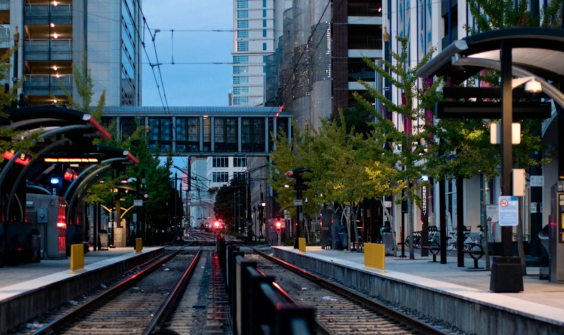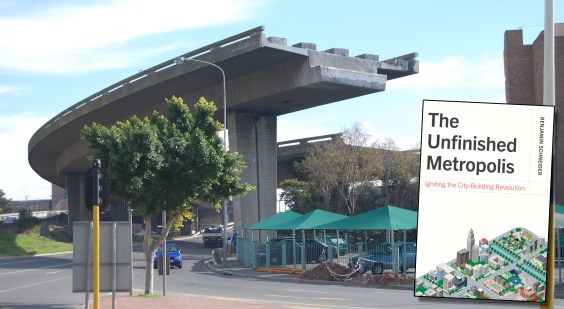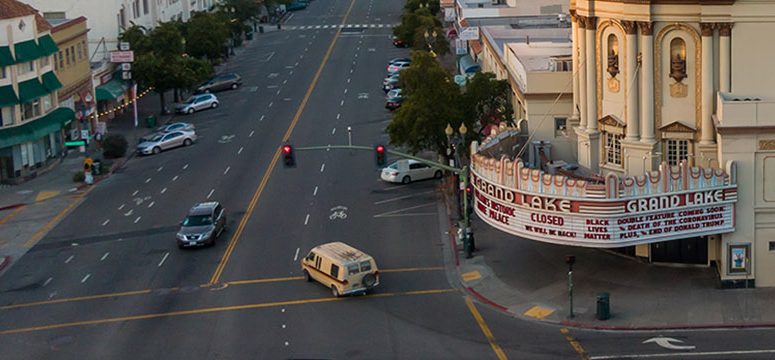 Flickr photo: Thomas Hawk
Flickr photo: Thomas HawkThe city plans to paint bike lanes in 22 locations within the first year after the Bike Plan injunction is lifted, all of which would be reversible upon a court order, according to a filing [PDF] by the City's Attorney's office today.
At a hearing on lifting the three-year-old injunction on Monday, a judge instructed the City Attorney's office to produce a declaration of the city's plans for immediate bicycle network improvements once the injunction is lifted. Rob Anderson and Mary Miles have challenged the adequacy of the city's Bike Plan EIR, and Superior Court Judge Peter J. Busch is still pondering whether to let the city begin work on the bike network before a hearing sometime next spring. Based on Judge Busch's line of questioning Monday, reversibility could be key to his ruling on lifting the injunction before then.
Miles argued on Monday that the city would complete many of the planned bike improvements before then, and should be stopped from installing any bike lanes in the meantime. The document released today suggests that the city would complete only a third of the projects in the Bike Plan within the first year, and any of those projects would be reversible in the unlikely event that Busch finds the EIR inadequate.
Perhaps even more interesting for cyclists, however, are the details of the city's plans. According to the declaration, which is comprised of testimony from Bike Plan Acting Implementation Manager Damon Curtis, an MTA traffic engineer, the city can paint bike lanes on about one-and-a-half miles of street per month, on average. At most, the city could paint about 30 percent of the 20 miles of bike lanes approved by the MTA Board this summer before March 2010.
According to Curtis, the city can also paint approximately 20 sharrows per day, and can install about 5 bike racks per day. The city also plans to implement a bike sharing program and experiment with colored bicycle lanes and innovative design treatments once the injunction is lifted, the declaration said.
Any of these changes would be "completely reversible," Curtis wrote, which may make Judge Busch look more favorably on lifting the injunction before a 2010 hearing on the EIR.
The implementation schedule isn't set in stone, Curtis wrote, and is dependent upon five major factors: safety considerations, funding, coordination with DPW paving schedules, connectivity and importance to the bicycle network, and weather. Installing bike lanes or sharrows requires two rain-free days before they can be painted, though removing existing paint can be done under wet weather conditions.
On November 12, both parties must produce short briefs on whether they believe the court would have the legal authority to reverse any new bike infrastructure installed before the EIR hearing, if it finds the EIR is inadequate (which is seemingly unlikely.) Once Busch reviews today's declaration and the November 12 filings, he could make a decision on whether the lift the injunction before the lengthy EIR hearing process is complete.
Below is a complete list of the projects the MTA is prioritizing within the first year after the injunction is lifted, according to the declaration filed today.
Bike lane projects the city is prioritizing for the first year after the injunction is lifted:
- Beale Street southbound bicycle lane, Bryant Street to Folsom Street (Project 2-5)
- Howard Street westbound bicycle lane at 9th Street (Project 2-8)
- Scott Street, northbound left turn bicycle lane, Fell Street to Oak Street (Project 3-5)
- Illinois Street bicycle lanes from 16th Street to Cargo Way (Project 4-3)
- Mississippi Street bicycle lanes, 16th Street to Mariposa Street (Project 4-5)
- Kansas Street bicycle lanes, 23rd Street to 26th Street (Project 5-8)
- Clipper Street bicycle lanes from Douglass Street to Portola Drive (Project 6-2)
- Laguna Honda Boulevard bicycle lanes from Clarendon to Woodside Avenue, and from Portola Drive to Woodside Avenue (Projects 6-3 and 6-4)
- Portola Drive Bicycle Lanes, from Corbett Avenue to O'Shaughnessy Boulevard (Project 6-5)
- 7th Avenue bicycle lanes and sharrows from Lawton Street to Lincoln Way (Project 7-2)
- Kirkham Street bicycle lanes, 6th Avenue to The Great Highway (with sharrows only between 18th and 20th Avenues) (Project 7-5)
- John F. Kennedy Drive bicycle lanes, Kezar Drive to Transverse Drive (Project 7-4)
- North Point Street bicycle lanes, The Embarcadero to Van Ness Avenue (Project 1-3)
- Fremont Street southbound bicycle lane, Folsom Street to Harrison Street (Project 2-7)
- Otis Street westbound bicycle lane, Gough Street to South Van Ness Avenue (Project 2-15)
- Townsend Street bicycle lanes, 8th Street to The Embarcadero (Project 2-16)
- Alemany Boulevard bicycle lanes, Bayshore Boulevard to Rousseau Street (Project 5-2)
- Ocean Avenue bicycle lanes, Alemany Boulevard to Lee Avenue (Project 5-9)
- Potrero Avenue and Bayshore Boulevard bicycle lanes, 25th Street to Cesar Chavez Street (Project 5-11)
- Claremont Boulevard bicycle lanes, Dewey Boulevard to Portola Drive (Project 6-1)
- Sloat Boulevard bicycle lanes, The Great Highway to Skyline Boulevard (Project 8-5)
Projects that would have "minimal impacts to traffic flow and parking loss" according to the declaration:
- Beale Street bicycle lane from Bryant Street to Folsom Street (Project 2-5)
- Fremont Street bicycle lane from Folsom Street to Harrison Street (Project 2-7)
- Howard Street westbound bicycle lane at 9th Street (Project 2-8)
- Otis Street westbound bicycle lane, Gough Street to South Van Ness Avenue (Project 2-15)
- Scott Street, northbound left tum bicycle lane, Fell Street to Oak Street (Project 3-5)
- Mississippi Street bicycle lanes, 16th Street to Mariposa Street (Project 4-5)
- Kansas Street bicyclelanes, 23rd Street to 26th Street (Project 5-8)
- Claremont Boulevard bicycle lanes, Dewey Boulevard to Portola Drive (Project 6-1)
- Clipper Street bicycle lanes from Douglass Street to Portola Drive (Project 6-2)
- 7th Avenue bicycle lanes and sharrows from Lawton Street to Lincoln Way (Project 7-2)
- John F. Kennedy Drive bicycle lanes, Kezar Drive to Transverse Drive (Project 7-4)
- Kirkham Street bicycle lanes, 6th Avenue to The Great Highway (with sharrows only between 18th and 20th Avenues) (Project 727)
- Sloat Boulevard bicycle lanes, The Great Highway to Skyline Boulevard (Project 8-5)





